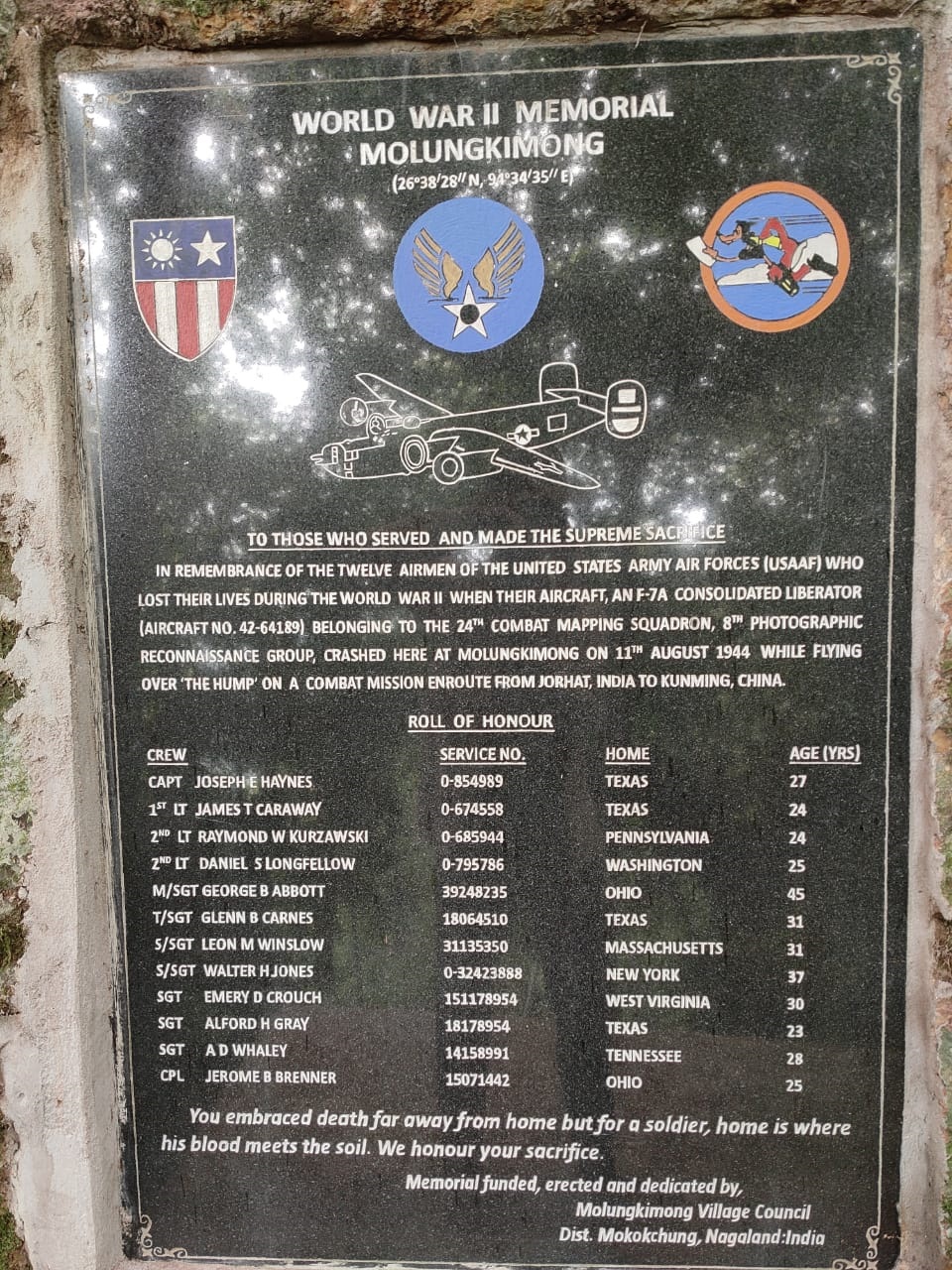MONDAY, AUGUST 11, 2025
- Home
- Remembering the ‘Forgotten Theatre’ of WWII: Nagaland Pays Tribute to Fallen USAAF Crew
Remembering the ‘Forgotten Theatre’ of WWII: Nagaland Pays Tribute to Fallen USAAF Crew
Many called China-Burma-India Theatre as the ‘Forgotten Theatre’ of World War II (WWII) but services rendered by the people of Nagaland will be remembered.
Published on Aug 11, 2025
By EMN
Share

Many have called it the "Forgotten Theatre" of World War II, but for those who served in this part of the world, the memories will never fade.
The China-Burma-India Theatre didn't receive the extensive, sometimes glamorous coverage afforded the war in Europe, nor did the war fighters receive the latest and best equipment with which to battle the invading Japanese. However, the Theatre was of critical importance in the war against the Empire of Japan's aggression. The purpose of basing operations in India was to support and supply the Allied effort assisting China in fending off the Imperial Japanese Army, which had taken control of substantial parts of the interior of that country. This opening of a "second front" forced Japan's military commanders to commit large numbers of troops, aircraft and equipment to the war in China, drawing them away from supporting the island perimeter which insulated the home islands from attack.
Despite the Allied efforts, in 1942 the Japanese were able to cut off the main overland supply corridor, the Burma Road, which stretched between Lashio and Kunming. Yet, the Allied success in holding India gave their armed forces a base of supply and operations from which to prosecute the war against the Japanese in Asia. The airfields hastily constructed in northeast India, in Assam and Arunachal Pradesh, restored a vital link to move men and material to bases in China. Aircraft had to regularly fly over some of the most inhospitable territory on Earth — airmen called it the "Hump," the Himalayan Mountain range containing the tallest mountains on the planet. It was a dangerous, but necessary, task; the loss of numerous aircraft and their crews was the high price paid to keep this vital supply line open. The route became known as "the Aluminum Trail" due to the wreckage of hundreds of lost planes scattered along its path which could be seen when flying the route.
The weather over the Himalayas could be as deadly an enemy as the Japanese, suddenly turning from sunny to stormy in a matter of minutes, forcing aircraft commanders — unable to locate the airfields in thick fog or wind-driven snow and rain — to order their crews to abandon their planes and parachute to the relative safety of the jungles below. Many an American airman owed their lives to the native people of Nagaland, who worked with search and rescue squads to locate and recover lost or injured airmen. My uncle, 1st Lt. Kenneth Starcher, a B-24 Liberator pilot serving with Gen. Claire Chennault's 14th Air Force "Flying Tigers," was one of them — but that is another story for another day.
Since precise navigation was hampered by years-old maps which were often outdated or even plainly wrong, the US Army Air Force was tasked with the important mission of accurately mapping the theatre, which had never been surveyed with modern cartological equipment aboard aircraft overflying the subcontinent. Sadly, even these non-combat missions could be hazardous to the men who conducted them.
One such mission came to a tragic end in the skies above the village of Molungkimong on August 11, 1944, when an American F-7A Liberator photographic aircraft exploded and crashed, killing all of the twelve Americans aboard. Thanks to the people of the village and surrounding area, their sacrifice — and the deaths of hundreds of Allied airmen who lost their lives in the CBI — will be remembered.

This year also, on August 11, 2025 which marks the 81st Anniversary, the Molungkimong WWII Memorial Museum became the focal point of remembrance as villagers and guests held a memorial service to honour the crew of the ill-fated Liberator. The solemn service included prayers, storytelling by one of the last remaining eyewitnesses, and a moment of silence in tribute to the twelve airmen. The memorial service along with the museum’s exhibits served as a poignant reminder of the courage and the ultimate sacrifice made by the twelve airmen while highlighting the enduring importance of preserving Nagaland’s WWII history for future generations.
Alan Starcher
United States
(*Alan Starcher is a retired insurance claim analyst and broadcast journalist in the US who has been researching the WWII activities of the US Army Air Force in China and India for over 10 years).

